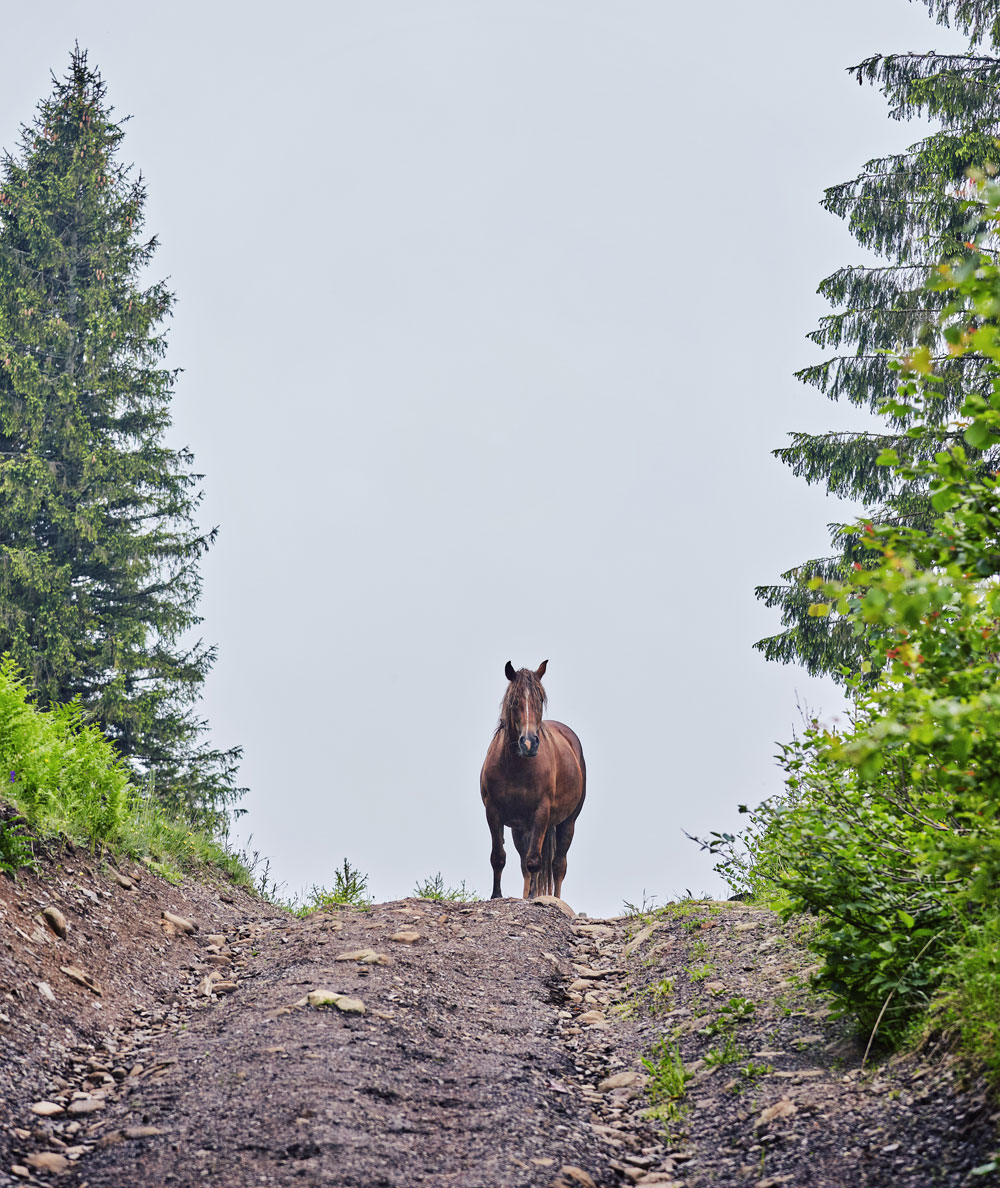Read how Courtney S. Diehl, DVM, helped a horse with a hamstring laceration 30 miles into the backcountry, accessible only by rough roads.
The rutted Jeep track stretched in front of me. Feeling extremely sorry for myself, I drove slowly around the boulders and potholes, not wanting to shatter the bottles of expensive drugs that I had in the vet unit on the back of the pickup truck.

As I lurched along the lonely road, I was cheered by the image of the weary but heroic young vet venturing into the wilderness to save lives. Newspapers might be calling to interview me after I’d plucked the hurt horse from the jaws of death. Perhaps the New York Times would even do the story. Maybe I’d be on TV!
Horrible crashing sounds came from within the vet unit as I lurched over a particularly deep rut. I stopped at the 15-mile mark and assessed the damage: $400 down the drain, not to mention the mounting wear and tear on my truck and tires. And I still had miles to go, plus the return trip. But heroic young vets venturing out to save lives didn’t stop to worry about such things, so on I went.
A Mysterious Scene
After an eternity, I found the camp. My patient waited for me, tied to a rail in the middle of a dusty clearing. I surveyed the crime scene carefully.
A farrier’s hoof stand was nearby, shoeing tools were scattered around on the ground, and I noticed a great deal of bloody dirt surrounding the stand. A sizeable laceration gaped open on the horse’s hamstring muscle on his hind leg, and dried blood coated the top of the farrier stand and the ground around the horse. He wore one shiny front shoe with fresh nails that had not yet been clinched. The other three feet were bare and untrimmed.
A farrier’s hoof stand was nearby, shoeing tools were scattered around on the ground, and I noticed a great deal of bloody dirt surrounding the stand.
No one showed up to help or explain further, so I untied the trembling horse, checked his vitals, and gave him a sedative and some pain medicine. He calmed down and moved close to me, and when his head had dropped, I plugged my clippers in to the converter wired to my truck battery and shaved the hair away from the gaping hole in his leg.
It took me almost half an hour to get the hamstring wound cleaned and the shredded tissues trimmed back to clean, healthy layers. I lavaged several liters of saline into and around the separated muscles to flush out the dirt and hair and placed deep sutures where I could.
A hamstring laceration is extremely difficult to close, and I knew I wasn’t going to succeed in pulling the skin over the torn muscles. As best as I could, I laced it all together with heavy non-absorbable suture, coated it with antibacterial ointment, and gave the horse a tetanus shot and some strong antibiotics.
Nobody Home
I wrote down a long list of instructions for the horse’s follow-up care, left several ointments and medicines, and lacking a better place to leave the note, tacked it and the large vet bill to the farrier’s stand.
There was still no sign of life at the camp, and I walked around and hollered as loudly as I could, finding several Coors Light cans and cigarette butts but no cowboys, drunk or sober. Finally I packed up the truck and left. I thought I might run into someone as I lurched back down the road, but no one appeared.
Owning up to the Bill
The next day, I dialed the number of the gentleman who had originally called me out to see the horse. Naturally he didn’t have a credit card handy, but he assured me that the office would pay me promptly.
He was indignant that no one had been there to help me out, and apologized several times. I explained the entire situation, leaving nothing out, and reviewed the instructions for the aftercare on the horse. I also got a mailing address for the bill.
The bill was not small, and reviewing it, I was a little alarmed at the total, but the drive alone had accounted for a good one-third of the costs. I had a tendency to take charges off of invoices when I shouldn’t, and I was proud of myself for standing firm and for once, charging what I was worth. I confidently mailed the bill the next day and followed up with another phone call to assure that it was received.
My frequent calls to check on the horse were never answered or returned, and I never learned what became of him. As time passed, I sent off several more bills, adding late fees and service charges. Although I waited patiently, I never did hear from the New York Times, or the television people.
I also never got paid.
COURTNEY S. DIEHL, DVM, has been an equine veterinarian since 2000. She is the author of Horse Vet: Chronicles of a Mobile Veterinarian and Stories of Eric the Fox, first place winner of the CIA EVVY award. She is currently working on her third book.
This article about a horse’s hamstring laceration originally appeared in the May 2018 issue of Horse Illustrated magazine. Click here to subscribe!
Further Reading:





